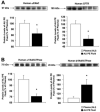Acute lung injury edema fluid decreases net fluid transport across human alveolar epithelial type II cells
- PMID: 17580309
- PMCID: PMC2765119
- DOI: 10.1074/jbc.M700821200
Acute lung injury edema fluid decreases net fluid transport across human alveolar epithelial type II cells
Abstract
Most patients with acute lung injury (ALI) have reduced alveolar fluid clearance that has been associated with higher mortality. Several mechanisms may contribute to the decrease in alveolar fluid clearance. In this study, we tested the hypothesis that pulmonary edema fluid from patients with ALI might reduce the expression of ion transport genes responsible for vectorial fluid transport in primary cultures of human alveolar epithelial type II cells. Following exposure to ALI pulmonary edema fluid, the gene copy number for the major sodium and chloride transport genes decreased. By Western blot analyses, protein levels of alphaENaC, alpha1Na,K-ATPase, and cystic fibrosis transmembrane conductance regulator decreased as well. In contrast, the gene copy number for several inflammatory cytokines increased markedly. Functional studies demonstrated that net vectorial fluid transport was reduced for human alveolar type II cells exposed to ALI pulmonary edema fluid compared with plasma (0.02 +/- 0.05 versus 1.31 +/- 0.56 microl/cm2/h, p < 0.02). An inhibitor of p38 MAPK phosphorylation (SB202190) partially reversed the effects of the edema fluid on net fluid transport as well as gene and protein expression of the main ion transporters. In summary, alveolar edema fluid from patients with ALI induced a significant reduction in sodium and chloride transport genes and proteins in human alveolar epithelial type II cells, effects that were associated with a decrease in net vectorial fluid transport across human alveolar type II cell monolayers.
Figures












References
-
- Matthay MA, Wiener-Kronish JP. Am. Rev. Respir. Dis. 1990;142:1250–1257. - PubMed
-
- Ware LB, Matthay MA. Am. J. Respir. Crit. Care Med. 2001;163:1376–1383. - PubMed
-
- Matthay MA, Folkesson HG, Clerici C. Physiol. Rev. 2002;82:569–600. - PubMed
-
- Matalon S, O’Brodovich H. Annu. Rev. Physiol. 1999;61:627–661. - PubMed
Publication types
MeSH terms
Grants and funding
LinkOut - more resources
Full Text Sources
Medical

